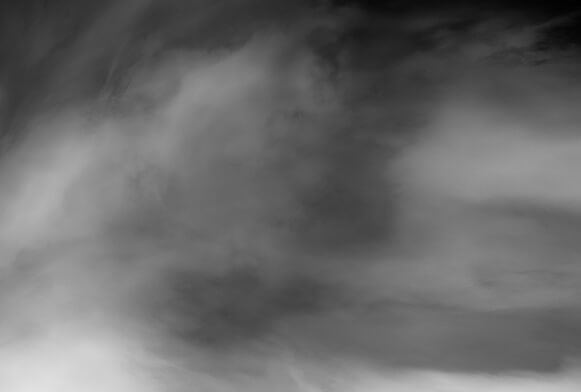In the world of film production, atmosphere is everything, and nothing sets the mood quite like the perfect haze. Fog effects have long been a cinematic tool for creating suspense, mystery, or even ethereal beauty.
From subtle misty backdrops to dense clouds that transform entire scenes, mastering fog is both an art and a science. This blog delves into the techniques, tools, and creative possibilities of crafting unforgettable fog effects for the big screen.
The Role of Fog in Enhancing Cinematic Atmosphere
Fog effects play a vital role in creating atmosphere in film production. They can enhance the mood of a scene, making it feel mysterious, dramatic, or even otherworldly. A fog machine allows filmmakers to control the density and spread of fog, tailoring it to suit the story’s needs.
Subtle mist can add depth to outdoor scenes, while thicker fog creates tension or hides visual elements for suspense. Lighting interacts beautifully with fog, scattering light and creating dynamic visuals that elevate a scene’s impact.
By using a fog machine effectively, filmmakers can transform ordinary settings into visually striking backdrops. Whether in horror, fantasy, or action films, fog helps bring cinematic visions to life in ways no other effect can.
Types of Fog Effects Used in Film Production
Light mist, created with a fog machine, adds subtle texture to outdoor or indoor scenes, enhancing depth and realism. Dense fog is ideal for building suspense, obscuring objects, or creating a sense of mystery.
Low-lying fog, often produced with a chilled fog machine, clings to the ground, perfect for eerie or dreamlike settings. Haze, a finer form of fog, spreads evenly and works well for highlighting light beams or enhancing the atmosphere in controlled environments.
Each type of fog serves a unique purpose, allowing filmmakers to shape the visual tone of their scenes effectively. Selecting the right fog machine is key to achieving the desired effect.
Choosing the Right Fog Machines for Your Project
Different fog machines produce various types of fog, so understanding your needs is the first step. A standard fog machine is great for general-purpose fog, while a low-lying fog machine creates effects that stay close to the ground.
For subtle atmospheric haze, a hazer is the best choice. Consider the size of your set and the duration of your shoot when selecting a machine, as some models are better suited for larger spaces or extended use.
Pay attention to features like output control, heat-up time, and compatibility with fog fluids. The right fog machine ensures consistent, reliable effects for your film.
How to Achieve Different Fog Densities and Textures
Achieving different fog densities and textures requires careful control of your fog machine and its settings. The type of fog fluid used plays a significant role in determining the density. Heavy fog fluid produces thicker clouds, while standard fluid creates lighter mist.
Adjusting the fog machine’s output settings lets you control how much fog is released and how quickly it spreads. For finer textures, use a hazer instead of a traditional fog machine, as it creates a consistent, thin layer.
To achieve low-lying fog, pair a fog machine with a chiller or dry ice to keep the fog close to the ground. Experimenting with timing, placement, and fluid types helps you craft the perfect density and texture for any scene.
Key Lighting Techniques to Highlight Fog Effects
Backlighting is one of the most effective techniques, as it highlights the particles in the fog, creating dramatic silhouettes and beams of light. To add depth, place lights at different angles to shape the fog and create a layered look.
Colored lights can be used to change the mood of a scene, whether warm for comfort or cool for mystery. Adjust the intensity of the lights to control how much of the fog is illuminated without overpowering the scene.
Using focused beams or spotlights helps direct attention while emphasizing the texture of the fog. Proper lighting transforms simple fog effects into visually striking cinematic moments.
Using Natural Fog vs. Artificial Fog: Pros and Cons
Natural fog can create authentic and unpredictable visuals, but it depends on weather conditions, making it unreliable for production schedules. Artificial fog, generated by a fog machine, offers consistency and control over density, spread, and timing.
While natural fog costs nothing, artificial fog requires equipment and fog fluid, adding to expenses. However, a fog machine allows filmmakers to work in any location and weather, ensuring dependable results.
Natural fog may have unique movement patterns, but artificial fog can be tailored to achieve specific effects. Choosing between the two depends on your project’s requirements, budget, and the level of control needed during filming.
Safety Considerations When Working with Fog on Set
Proper ventilation is essential to prevent fog buildup, which can reduce visibility or create breathing difficulties. Always use fog fluids recommended by the machine’s manufacturer to avoid harmful fumes.
Keep the fog machine away from flammable materials, as it generates heat during operation. Position the machine securely to prevent tipping or spills, which could pose hazards to the crew.
Communicate with the team about fog effects, ensuring everyone is aware of the density and timing to avoid accidents. Following these precautions ensures a safe and efficient production environment.
Creative Applications of Fog in Various Film Genres
Fog effects enhance storytelling across many film genres, with each application bringing a unique visual impact. In horror films, a fog machine creates eerie, dense fog to obscure scenes and build suspense.
Fantasy and sci-fi genres often use low-lying fog to suggest otherworldly environments or mystical landscapes. In dramas or period pieces, subtle fog can add depth and atmosphere, creating a timeless or dreamlike quality. Action films use fog for dramatic entrances or to intensify chaotic battle scenes.
Even romantic films can benefit from soft haze to create warm, intimate settings. The versatility of a fog machine allows filmmakers to tailor effects that suit the tone and aesthetic of any genre, making it an essential tool for creative expression.
Tips for Seamlessly Integrating Fog Effects with CGI and Visual Effects
Integrating fog effects with CGI and visual effects requires careful planning and execution. Start by using a fog machine to create a practical base layer of fog on the set, which adds realism and helps CGI blend seamlessly.
Match the density and movement of the practical fog with digital effects during post-production for continuity. Use markers or reference points on set to guide CGI placement and ensure alignment with physical elements. Lighting is key—set the same lighting conditions for both the fog machine effects and the digital layers to maintain consistency.
Keep communication open between the production and post-production teams to ensure smooth integration. With these steps, fog effects enhance scenes without looking artificial or disconnected from the film.






